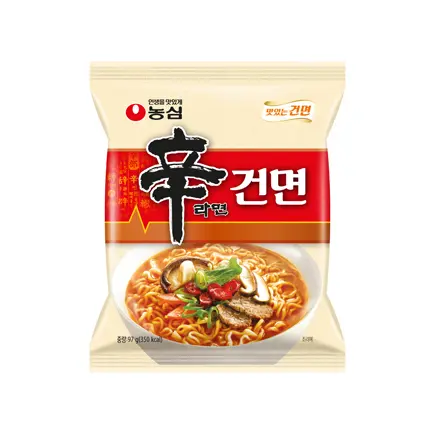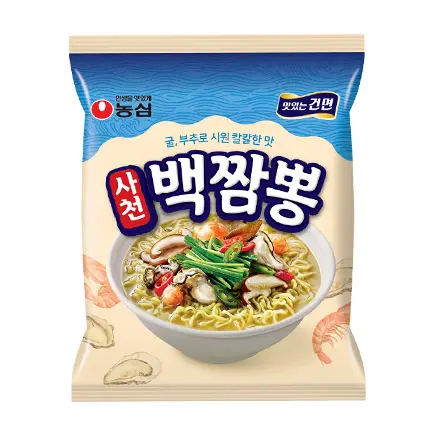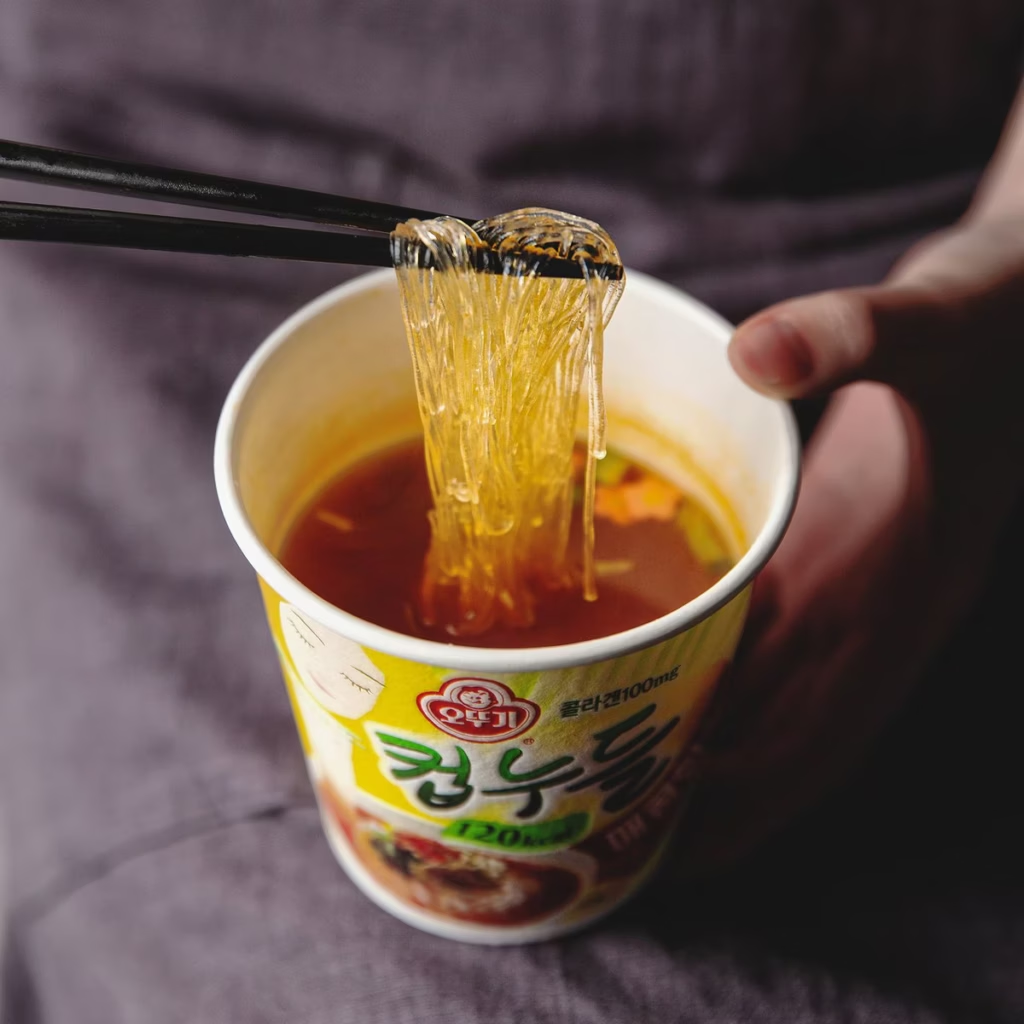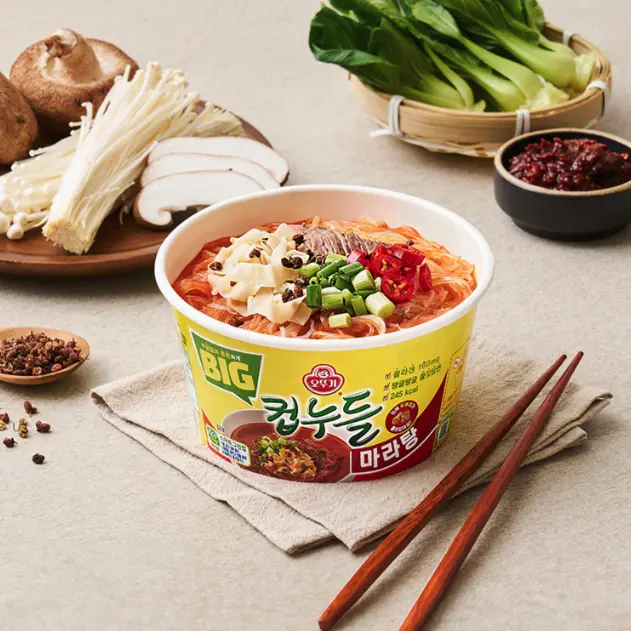Today, let’s check out the Top 5 Healthy Korean Ramyun options for weight loss.
These are the ones that actually helped me when I lost 20kg myself. The idea that Korean ramen always makes you gain weight? That’s simply not true.
Table of Contents
Is Korean Ramyun Healthy?
According to diet experts, Korean ramyun (ramyeon) is not necessarily bad for weight loss. Most Korean instant noodles have about 500 calories, which is much less than a burger or slice of pizza, which can have more than 1,000 calories per serving.
Ramyun also contains a moderate amount of carbohydrates and some protein.
So if you add some extra protein (like an egg, tofu, or chicken), it can even be a helpful meal for dieters.
The only thing to watch out for is the sodium in the soup. Experts recommend not drinking all of the broth to keep it healthier.

Craving a guilty pleasure twist on your ramen? You have to try this corn cheese ramen recipe. The rich, salty cheese pairs insanely well with the noodles—it’s a match made in comfort food heaven. I know this is supposed to be a weight-loss ramen post… but I just had to include it. It’s that good. Sorry, not sorry haha
How to Make Korean Ramen Healthier
Add Protein
Instant ramen has some protein, but it’s usually not enough to keep you full for long. Adding an egg is an easy way to boost the protein-and it tastes great, too. If you want something more filling, try adding meat. In Korea, it’s actually common to add pork belly or thinly sliced beef brisket to ramen for an extra savory touch.
Add Vegetables
Toss in some green onions, mushrooms, or bean sprouts for more fiber and vitamins. These simple additions not only make your ramen healthier, but also more flavorful.
A popular trend in Korea right now is “cabbage ramen” (baechu ramyeon), popularized by monochrome chef Yoon Namno.
Use Only Half the Noodles
If you’re trying to cut down on carbs, try using half the pasta and loading up on protein and vegetables instead. This way you can enjoy a more balanced bowl with extra nutrients.
Avoid Drinking Too Much Broth
Ramen broth tends to be high in sodium – just one serving can contain nearly 90% of your recommended daily sodium intake. It’s better to sip the broth sparingly. But I get it… the broth is so good, it’s hard to resist. Personally, I can’t give it up, haha.
Top 5 Korean Ramyun For Weight Loss
Pulmuone Saengmyeon Sikgam (Mild Flavor)
- Nutrition (per 97.4g pack): 350 kcal · 73g carbs · 7g protein · 3.6g fat · 0.8g saturated fat · 0g trans fat · 0.4mg cholesterol · 1,780mg sodium

- Recommended: https://amzn.to/3EAyUNk (US)
- Pulmuone’s Saengmyeon Sikgam (Fresh Noodle Texture) Ramen is a healthier choice for instant Korean ramyun lovers. Instead of being fried, the noodles are slowly air-dried, which helps them stay chewy until the last bite – and keeps the calories lower, too.
- This ramen comes in two flavors: mild and spicy, and interestingly, the spicy version is even lower in calories. Unlike many Korean ramyuns, both the powdered soup base and the vegetable flakes come in a single packet, making it convenient and easy.
- The mild flavor is perfect for those who can’t handle spicy food-there’s absolutely no heat, but it’s still full of savory flavor. Compared to typical fried instant noodles, the broth is much lighter and cleaner, making it a great choice if you’re looking for something healthier without giving up the comfort of ramen.
Shin Ramyun Non-Fried (Air-Dried)
- Nutrition (per 97g pack): 350 kcal · 68g carbs · 9g protein · 4.6g fat · 1.4g saturated fat · 0g trans fat · 0mg cholesterol · 1,790mg sodium

- Recommended: https://amzn.to/3RZO29V (US)
- Korean instant noodles Shin Ramyun is really famous as you know but this is the non-fried version of Korea’s most iconic instant noodle – Shin Ramen. Instead of being fried, the noodles are air-dried using hot air at around 100˚C, resulting in a lighter, less greasy texture while retaining the signature spicy flavor of the original.
- The broth is clean, light and satisfying, without the heaviness you often feel after eating regular fried noodles. Personally, I feel much better after eating this compared to the classic version – no bloating, and it’s easier to digest. Of all the air-dried ramyuns, this is my absolute favorite. Highly recommended!
Anchovy Kalguksu (Non-Fried Noodle Soup)
- Nutrition (per 98g pack): 335 kcal · 72g carbs · 9g protein · 4g fat · 1.7g saturated fat · 0g trans fat · 13mg cholesterol · 1,790mg sodium
- Recommended: https://amzn.to/3YeP5Xk (US)
- Unlike typical Korean ramyun, this one uses wide, flat noodles inspired by traditional kalguksu (Korean knife-cut noodles). It’s one of the first non-fried instant noodles in Korea—no greasy smell, just clean, savory flavor. Thanks to air-drying, it also has a longer shelf life.
- The broth is anchovy-based, light and comforting. Inside the flake packet, you’ll even find thin strips of egg garnish—just like real homemade kalguksu. It’s not spicy at all, making it perfect for those looking for a mild, healthy noodle soup. Fun fact: this is my mom’s all-time favorite ramen!
Sichuan White Jjamppong (Non-Fried Seafood Ramen)
- Nutrition (per 94g pack): 345 kcal · 67g carbs · 8g protein · 5g fat · 0g trans fat · 1.7g saturated fat · 10mg cholesterol · 1,720mg sodium

- Recommended: https://amzn.to/3EzO0CD (US)
- This is not your average ramyun-it’s a premium non-fried Korean ramen that stands out from the rest. Sichuan White Jjamppong features air-dried noodles that are extra chewy and satisfying, without the greasiness of fried noodles.
- Its signature white broth may remind you of Nagasaki-style jjamppong, but the base is completely different: instead of pork bone (tonkotsu), it uses a deep seafood broth. It comes loaded with generous flakes of mushrooms, chili peppers, and garlic chives, and even includes chunky shrimp balls that add a burst of flavor and texture.
- It’s a bit more expensive than other instant noodles, but once you taste the quality-especially the rich seafood flavors-you’ll understand why. The soup has a mild kick, true to its Sichuan name, but it’s not overwhelmingly spicy for most Koreans. Still, if you’re sensitive to spice or strong seafood flavors, you may want to try something milder.
- But if you love seafood like I do, this ramen is an absolute must. It’s flavorful, satisfying Korean ramyun, and well worth the price.
Cup Noodle (Spicy Flavor)
- Nutrition (per 37.8g cup): 120 kcal · 29g carbs · 1g protein · 0g fat · 0g trans fat · 0g saturated fat · 0g cholesterol · 890mg sodium

- Recommended: https://amzn.to/4itFyTp (US)
- Cup Noodle—often called the weight loss Korean ramyun in Korea—is a super low-calorie cup noodle that’s been a go-to for many during their diet journey (including me!). At just 120 kcal per cup, it’s the perfect guilt-free treat, though keep in mind the portion is smaller than regular instant noodles.
- The noodle itself is ultra-thin, transparent glass noodles—about 0.2mm thick—which gives it a soft and slightly chewy texture. The dried topping includes green onion, carrot, kimchi, and fish cake. Despite being low-cal, the soup has a surprisingly satisfying spicy kick.
- You’ll find a variety of flavors beyond spicy: original udon, rose, party noodle (janchi-guksu), and even Vietnamese pho style. They’re all designed to be light, quick meals for those watching calories.
- One tip: This noodle is virtually fat-free and very low in protein (just 1g), so I recommend adding an egg, chicken breast, or tofu on the side to make it more filling and balanced.
Disclosure: Blonde Kimchi is part of the Amazon Services LLC Associates Program, an affiliate advertising program that allows websites to earn advertising fees by linking to Amazon.com and promoting products.
